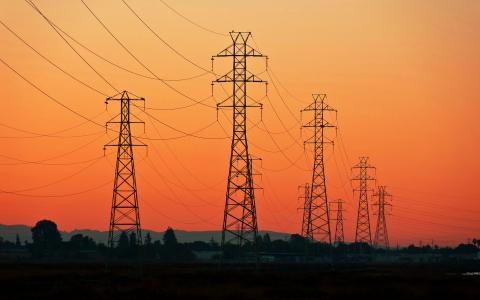
(CBS News) - Although inflation has steadily cooled since peaking in June of last year, electricity costs continue to heat up.
The typical power bill is set to rise about 2% this summer from a year ago, according to the Energy Information Administration. The reason: While wholesale power costs have dropped, there is generally a lag in when such decreases filter down to the prices residents see on their monthly power bill.
"Although wholesale power prices have come down significantly so far in 2023, those lower costs may not be apparent in retail prices until later this year or in 2024," the EIA wrote.
Most of the electricity in the U.S. — about 40% — is produced by burning natural gas, the cost of which spiked to a 14-year-high last fall before dropping early in 2023.
"A lot of utilities buy natural gas in the fall, and they try to spread it out over time so consumers don't get hit with a large bill right away," said Mark Wolfe, executive director of the National Energy Assistance Directors' Association.
"If you're a consumer it's kind of confusing," he said. "Consumers look at gasoline, and say, well, gasoline's come down, why am I still paying more money for heat and power?"
Most utilities need to ask regulators to approve any price increases — another reason for the delayed price changes. And outside of fuel prices, utilities' costs for labor and maintenance are still rising.
"Utilities are rebuilding their grids, which is expensive," Wolfe said. "About half the cost of electricity that a consumer buys is the wires. So just because the cost of natural gas fuel has come down doesn't mean it's a one-to-one relationship."
Power costs vary across the nation, with the average cost of electricity in New England being double that of the cheapest region — the Mountain West. New Englanders should see a typical monthly bill of about $180 this summer, the EIA predicted, which is $14 higher than last year.
"The New England power market experienced record-breaking cold weather this past winter and — combined with limited natural gas pipeline capacity — added upward pressure to natural gas prices, which ultimately affects regional electricity prices," the EIA said.
By contrast, the Southeast is predicted to see a slight drop in monthly bills, to about $187, or $8 lower than last year, because the EIA expects a cooler summer in the region, which means lower air-conditioner usage.
A caveat to such forecasts: The weather adds a great deal of uncertainty. "If temperatures end up much hotter than expected, households will likely face higher electricity bills, especially in the southern states," the agency said.
By Irina Ivanova



